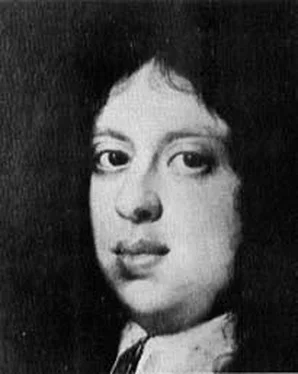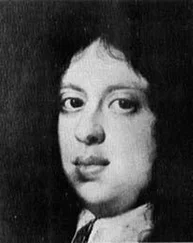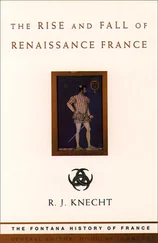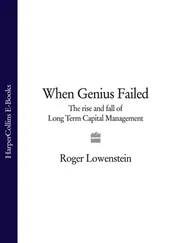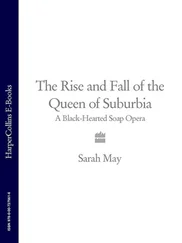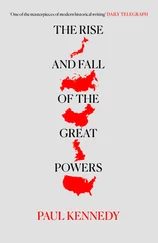a great quantity of artillery of a sort never before seen in Italy [which] rendered ridiculous all former weapons of attack… These were called cannon and they used iron cannon balls instead of stone as before, and this new shot was incomparably larger and heavier than that which had previously been employed. Furthermore, they were hauled on carriages drawn not by oxen as was the custom in Italy but by horses… and were led right up to the walls and set in position there with incredible speed. And they used this diabolical weapon not only in besieging cities but also in the field.
When the French and Italian armies finally clashed by the banks, of the river Taro in July 1495, the mercenary troops of the Holy League were no match for King Charles’s artillerymen and cavalry. The battle was short and ferocious, more savage and bloody, indeed, than any battle fought in Italy since the end of the thirteenth century. Italian losses were enormous; and, as the greatly outnumbered French army continued its northward march, hundreds of French camp-followers ran on to the field with knives and axes to hack apart the screaming, wounded Italians. Since he retained possession of the battle-ground and had captured the French baggage train – which included a sword and helmet said to have belonged to Charlemagne, jewels and plate, the royal seals, a piece of the Holy Cross, a sacred thorn, a vest of the Blessed Virgin, a limb of St Denis and a book depicting naked women ‘painted at various times and places… sketches of intercourse and lasciviousness in each city’ – the Marquis of Mantua claimed the victory. But by the end of August Charles and his army, still a powerful force, though mauled and weary, were across the Alps and safely home in France, leaving the Italians shocked by the realization that for all their virtues, talents, wealth, past glory and experience, for all their skill as military engineers, they had been utterly unable to withstand the advance of the ruthless men from the north.
In this traumatic campaign Florence had played no part. Firm in his allegiance to ‘God’s instrument’, Savonarola had declined to have anything to do with the Holy League. Amazed that an obscure Dominican should wield such influence, and annoyed not only by his sermons in support of the invader but also by his claims to be God’s chosen mouthpiece, the Pope asked Savonarola to come to Rome to explain himself. Savonarola replied that Florence could not spare him, that he was not well enough to travel, and that, in any case, it was contrary to God’s will that he should do so. Thus had begun a correspondence which, growing increasingly less restrained, had ended with the Pope’s forbidding Savonarola to deliver any further sermons. For a time Savonarola had obeyed the Pope’s commands, his place in the pulpit being taken by his devoted disciple, Fra Domenico da Pescia; but in February 1496, choosing to suppose that the Pope’s ban was no longer in force, Savonarola began a course of sermons which were given every day in the Cathedral until 3 April.
The Pope used every means at his disposal to bring Savonarola to heel. He gave instructions that the Tuscan Dominicans, who had been granted independence, should revert to Roman control since this would enable him to send Savonarola to another monastery far from Florence. Savonarola declined to accept the Pope’s jurisdiction in the matter. Alexander even offered him a cardinal’s hat if he would give up preaching his sermons. Savonarola replied that another sort of red hat would suit him better, ‘one red with blood’.
At length, in June 1497, the Pope took the final step and excommunicated him. For six months Savonarola pondered his dilemma, fasting and praying, until God guided him to the decision that it was his duty to defy the Pope. On Christmas Day he did so publicly by celebrating High Mass in the Cathedral. Alexander responded by demanding of the Signoria that they either dispatch ‘that son of iniquity, Fra Hieronymo Savonarola’ to Rome or lock him up in Florence. If they did not do so, he would lay the entire city under an interdict.
‘You have not listened to my expositions,’ Savonarola replied to the Pope.
I can no longer place any faith in your Holiness, but must trust myself wholly to Him who chooses the weak things of this world to confound the strong. Your Holiness is well advised to make immediate provisions for your own salvation.
With the Signoria , whom he considered to have been far too mild in their response to the Pope’s threats, Savonarola was even more harshly admonitory. ‘Tell those who are seeking to make themselves great and exalted that their seats are prepared for them – in Hell… Tell them that the rod has come. Someone has his seat in Hell already.’
But the Pope had timed his threat well. Savonarola’s supporters were losing ground in Florence where, indeed, they had been only partly responsible for the impermanent changes which had taken place in the government of the city. There had been poor harvests that year in Tuscany; starving people had fallen down and died in the streets; there had also been an outbreak of plague. Savonarola’s hero, King Charles, had not returned Pisa to Florence as he had promised to do, but had handed it over instead to its inhabitants who had taken up arms to defend their independence. And the subsequent war, fought as usual by ill-paid mercenaries, dragged on indeterminately. Making much of these calamities, Savonarola’s opponents had been more and more outspoken in their criticisms of his regime. A party of high – spirited young men known as Compagnacci , mostly sons of rich families, had gone so far as to smear the Cathedral pulpit with grease, hanging round it the putrid skin of an ass, and to contrive the fall of a heavy chest which came crashing down to the stone floor of the nave, sending the panic-stricken congregation rushing out of the Cathedral in the middle of the Prior’s sermon.
It was one of the last sermons which Savonarola was to deliver; for it had been decided in Florence that, in view of the Pope’s warnings, he must be asked to preach no more. He agreed to desist on condition that he be allowed the opportunity of vindicating himself. He attempted to do so on 18 March in a sermon in which he insisted on his right to resist unlawful authority, made reference to the fulfilment of his prophecies and castigated the Church as a Satanic institution for the promotion of whoredom and vice. He had not preached because he wanted to but because he had been compelled to by a raging fire within the very marrow of his bones: ‘I feel myself all burning, all inflamed with the spirit of the Lord. Oh, spirit within! You rouse the waves of the sea, as the wind does. You stir the tempest as you pass. I can do no other.’
After this final sermon the Franciscans, who had long challenged the Dominicans’ claims to a special relationship with God, renewed their request that Savonarola should produce some evidence of His peculiar favour. Fra Francesco da Puglia, a Franciscan monk, in particular insisted that Savonarola’s claims to divine inspiration were false, and that he could not prove they were otherwise. He offered to walk through fire in company with Savonarola to satisfy the world that the Dominican was not under God’s protection. Savonarola declined to take part in the ordeal, protesting that he was reserved for higher work; but he agreed that his passionately devoted supporter, Fra Domenico da Pescia, might represent him. Fra Domenico eagerly accepted the challenge. Fra Francesco, however, refused to match himself with anyone other than Savonarola; so another Franciscan, Fra Giuliano Rondinelli, was found to take his place.
Most members of the Signoria were horrified by this suggested reversion to the barbarism of past ages. One suggested that their ancestors would be ashamed of them if they could hear them even so much as discussing the propriety of the proposed ordeal. Another put forward the idea that walking across the Arno without getting wet would be ‘just as good a miracle’ to settle the dispute. Yet it was felt that the populace had by now become so excited by the prospect of an ordeal by fire that it might prove dangerous to disappoint them. It was settled that if the Dominican, Fra Domenico, died then Savonarola would be banished from Florence; if the Franciscan, Fra Giuliano, perished – as, indeed, he expected to do – but the Dominican did not, then Fra Francesco da Puglia would be banished. It was also settled that the ordeal should take place in the Piazza della Signoria on Saturday 7 April 1498 between ten o’clock in the morning and two in the afternoon, that on the appointed day all strangers must leave the city, the streets be barricaded, and the approaches to the Piazza held by armed guards.
Читать дальше
